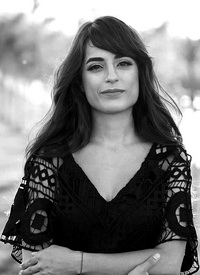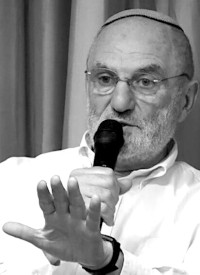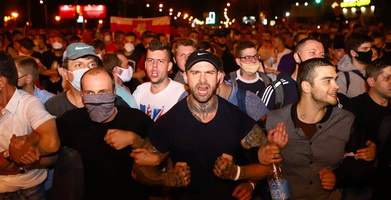
We all came out of one greatcoat – the USSR. Belarus, Ukraine, Russia, Georgia, Kyrgyzstan. We had similar starting conditions – of course, with our own local specifics. And after the collapse of the Soviet Union, we went through similar processes of social, economic and political transformation.
Authoritarian regimes emerged that were necessary for the newborn class of the bourgeoisie for the primary accumulation of capital – Yeltsin, Kuchma, Shevardnadze, Akayev, Aliyev... The presidents of this period were really perceived as guarantors and arbiters – guarantors of the inviolability of the plundered former public property, and arbitrators in disputes between different groups of big capital.
But at the same time, a social distance arose between the favorites of the new system – big business, oligarchs – and outsiders, other social groups, from hired workers to small entrepreneurs.
This sparked protests, the main slogan of which was civil rights. These protests received the Ukrainian name "Maidan,” since the first of them began in Ukraine (the action "Ukraine without Kuchma" in 2001). However, these Maidans could not change the system, and did not intend to change it. By concentrating resources, big capital was able to use the Maidans, which took place both in the noisy squares and in the silence of government offices, to pit some factions of the oligarchy against others. Or it simply appointed at the top candidates more acceptable for solving current issues. This is how Putin, Saakashvili, Yushchenko, Altynbaev appeared.
These processes have exacerbated the financial, and therefore ideological, influence of transnational capital. Having crushed their enemy in the Cold War, Western capitalists wanted to master the conquered territories, gaining markets, raw materials and cheap labor.
But all analogies have their drawbacks. Ukraine and Belarus are probably the closest countries in all respects. We follow similar paths, but at different speeds.
Having received huge support from the Belarusians and having established one of the harshest authoritarian regimes in the post-Soviet space, President Lukashenko managed to preserve many social standards, most industrial enterprises. And, maneuvering, he managed, albeit at a stretch, to remain in a middle position between East and West. Moreover, after the confrontation between Ukraine and Russia, Belarus actually took away from Ukraine the position of a buffer state.
All this was ensured by Father's 25-year rule. Nevertheless, the general trends are manifested today in Belarus.
Market “reforms” also affected the Sybres, which are located between two capitalist giants – the EU and the Russian Federation. On the one hand, these reforms hit the workers. On the other hand, new social groups have come to life, including big business and its clientele. The former are dissatisfied with the antisocial nature of the "reforms" (the law on "parasites," contract labor). The latter want to move quickly to the market. And these two opposites have merged in today's events.
The protests in Belarus have social causes, as in Ukraine and Georgia. And, as in many post-Soviet countries, the presidential elections were the spark for them. But the main question is, who will be the beneficiary of the protests? Who will come to power as a result of the next Maidan and will be able to realize their interests? Obviously,someone who has the necessary resources, media and capabilities.
In Belarus, as in Ukraine, it is a comprador bourgeoisie, connected with the West and the Russian Federation. There is no significant social movement with a social agenda, a left-wing political entity that can take power and carry out social reforms in the interests of the working class. At the protest rallies of the workers of MAZ or BELAZ, serious social demands are almost unheard – except perhaps in the most general, amorphous form.
The programs of Lukashenko's competitors, connected with the interests of foreign capitalists, include privatization, land sales, neoliberal reforms and imply decommunization, which is familiar in Ukraine. In short, all the same that is being implemented now in Ukraine. Whether the Lukasheno regime falls, or whether he remains president for now as a result of agreements with external players, these programs will be implemented in the country in the near future.
This is the interest of transnational capital, for which Belarus, like Ukraine, is nothing more than a raw material appendage, sales market, reservoir of cheap labor. They will not carry out social reforms either in Belarus or in Ukraine. This is not in the interests of Western and Russian capital.
Belarus, like Ukraine, needs change. Social change. And they will certainly happen, because this is required by the logic of social processes in our countries and the crisis of world capitalism. If changes are impossible through parliamentary means, they will take place through Maidans. Social Maidans.
But they will happen only when both we and our neighbors have an organized social movement that can offer society a social agenda independent of the agenda of the right. And implement a program of social, not market change.
Without this, the struggle for freedom – in alliance with transnational capital and the comprador bourgeoisie – will turn into an immeasurably greater lack of freedom, with the final suppression of social and civil rights.
Both in Ukraine and in Belarus.
By Volodymyr Chemeris
Translated by Greg Butterfield
-
Історія
Африка и немцы - история колонизации Намибии
Илья Деревянко история колонизации Намибии>> -
Економіка
Уолл-стрит рассчитывает на прибыли от войны
Илай Клифтон Спрос растет>> -
Антифашизм
Комплекс Бандеры. Фашисты: история, функции, сети
Junge Welt Против ревизионизма>> -
Історія
«Красная скала». Камни истории и флаги войны
Андрій Манчук Создатели конфликта>>

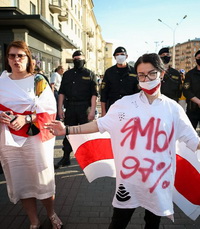
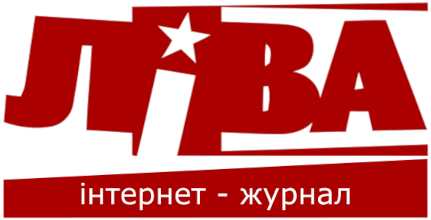










 RSS
RSS


